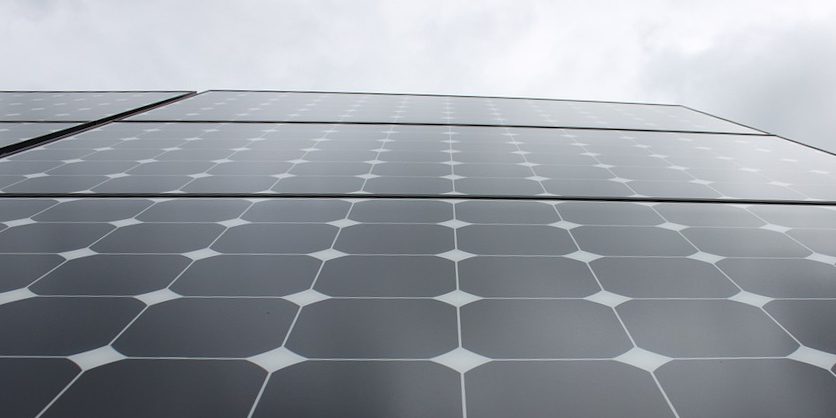Yes. Solar panels do still work on cloudy days and, cloudy days may deliver peak power efficiency too.
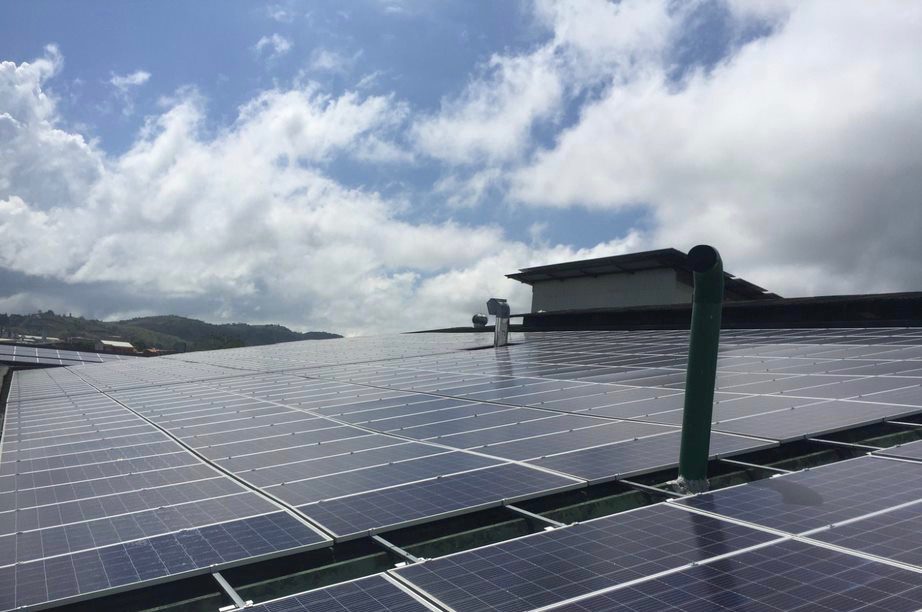
How do my solar panels work on cloudy days and even generate more power when there are clouds? If it seems counterintuitive that you might get more power from your solar panels on a cloudy day, then you should definitely read on. After all, energy generation is key to saving money with solar panels.
Para entender un poco más de este tema debemos hablar de los fundamentos. Entonces, el impacto de las nubes tendrá mucho más sentido. En este artículo hablaremos de:
• What causes a solar panel to produce more or less energy?
• When it’s cloudy, what is the impact on solar energy production?
• How can clouds actually cause power generation to be higher?
In the end, it will all be clear that you can save money with solar panels even when there are clouds.
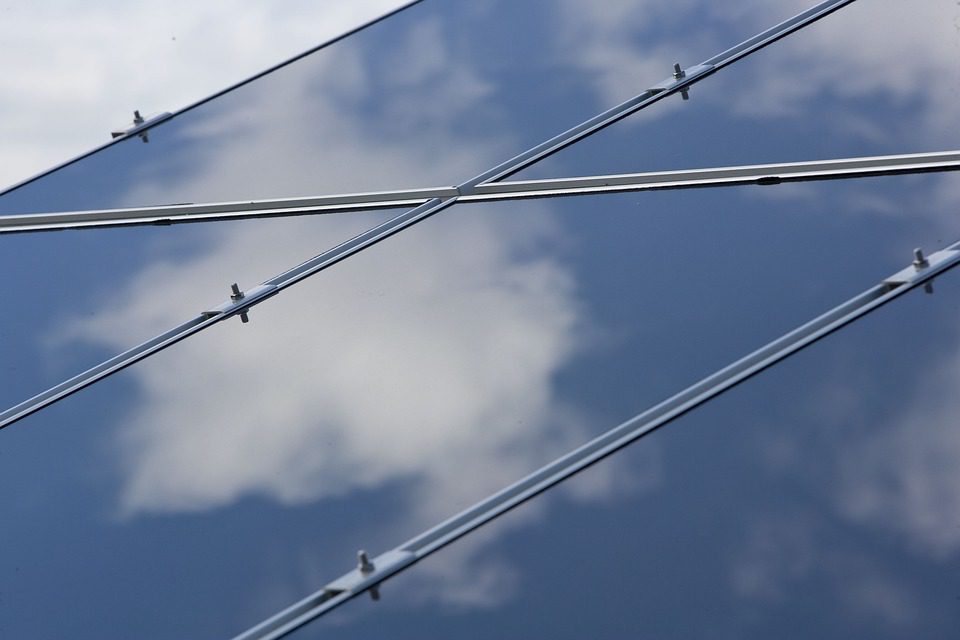
Cloudy or clear: Solar panels can use direct or indirect sunlight to generate power
There are several factors that can affect how much energy a solar panel can produce and, as a result, how much money you can save. To keep things simple, we are not going to discuss different properties of solar panels, although those certainly do matter along with manufacturing quality, real-world performance, reliability, a manufacturer’s service, and warranty conditions.
Some solar panels have more efficient technologies. For example, JA Solar has panels that use an interesting innovation called PERC technology. Other solar panels are bifacial and can produce energy when light hits either side. There is a lot of variety out there amongst solar panels that will be covered in detail in other posts.
For this discussion, we will keep the comparison simple—two identical solar panels in different conditions.
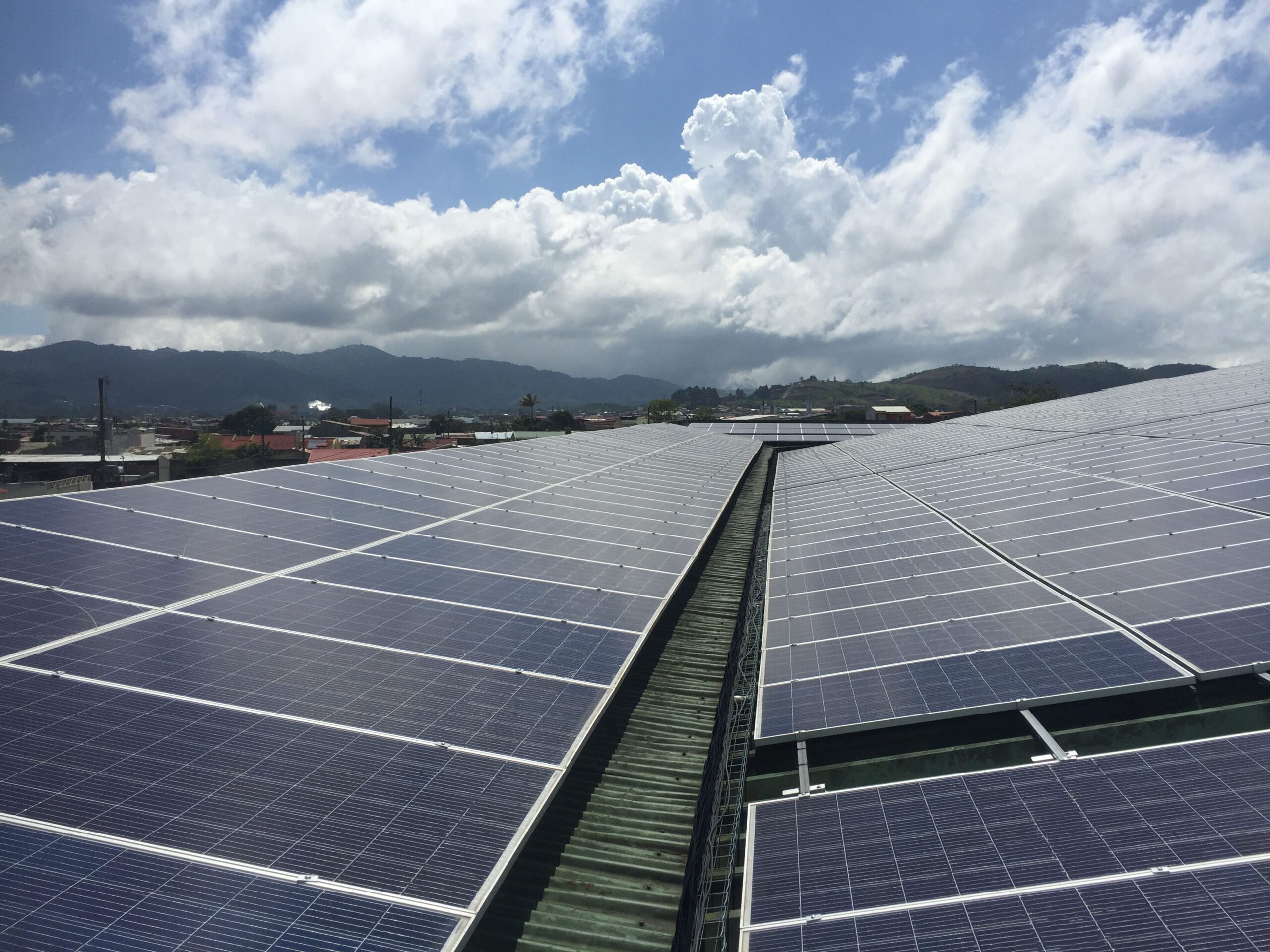
Heat and solar panel efficiency
Warmer temperatures can actually reduce the amount of energy you get from your solar panels. You might think that the opposite is true because we usually equate warmer temperatures with lots of sun, but it isn’t that simple. The physics involved can get a bit complicated, the physics of electricity, thermodynamics, and the nature of light are all at play (check out this piece for more details).
he simple explanation is basically that a hot solar panel has a lower capacity to capture energy from each photon (or particle) of light that hits it so even if it is getting lots of light, it isn’t capturing much of that energy.
Solar Energy in Central America
With modern solar panels, it takes incredible temperatures to render the panel so inefficient that you don’t save money. In Central America, we have never seen anything close to the kind of temperatures required to cause such a loss of efficiency that solar wouldn’t be ‘worth it’.
With degrading power outputs in solar panels occurring when temperatures reach above 25 Celsius, we ask quite an opposite question in our region: how fast does your particular solar project take to reach its payback period?
Things like weather and temperature always get taken into account when we model a system in Helioscope, the solar industry’s leading software platform for designing and selling high-performance solar arrays. Check out this article to understand more about how we predict how much energy a solar energy system will produce.
However, while we do definitely see a noticeable difference between the performance of solar panels in hot areas vs those in cooler areas, it is far from the most important factor.
In Central America, the return of investment generally lies between 3 years and 6 years, and these differences are much more likely to come from factors like your particular distributor than factors like weather.
External Factors that impact solar efficiency
Location matters: Latitude
Solar power systems produce more energy where there’s lots of sunlight! It seems so simple. That being said, not all places on Earth receive the same annual sunshine.
Relative insolation—the amount of solar radiation received in a given area—is a huge factor in how much energy your solar panels produce. In Costa Rica, Panama, and Honduras, our insolation is exceptional—amongst the best in the world.
Insolation is determined by factors such as local weather, the time of year, and most importantly, the latitude of your home or business. Have you ever wondered why we have seasons? It is because the Earth is tilted by 23.5 degrees and parts of the planet will be closer to the sun at different times of year (closer is summer, further is winter). This translates to the Sun being at different altitudes in the sky depending on the season.
The Sun will be highest in the sky in the summer and lowest in the winter, so your solar panel’s production numbers will vary according to the season (your system will undoubtedly have peak and low periods, but, remember, it is all about annual production)
You better be sharp with your angles: Orientation
Solar panels need to be pointed at the Sun in order to maximize production. System designers accomplish this by orienting the panels such that their pitch and azimuth allow for the most annual exposure.
Since the Sun varies in its altitude angle throughout the year, the solar panels need to be tilted so that—on average—they receive the most sunlight. This angle is typically about the same as your local latitude. If you are living in Central America, the angle will usually be between 9 and around 15 degrees. This angle is relative to the ground, not the surface of your roof.
The other angle you have to take into consideration is the azimuth angle
Typically the azimuth angle is measured from a cardinal direction like north or south. In Costa Rica, Panama, and the rest of Central America, pointing your panels perfectly south is ideal because they will see maximum sunlight exposure.
It’s not the end of the world if you have an east/west facing roof, though. Solar energy systems are frequently seen nowadays on roofs with east/west orientations. They do produce a bit less, but it usually makes more sense than changing the roof.
If you live in Central America, you really want to think hard about pointing your panels north. This will generate the lowest production. But, since we have such high irradiation compared to other parts of the world, it might make sense in Central America even if you hear friends further North saying it is a no-no. Either way, North-facing roofs are generally the last choice.
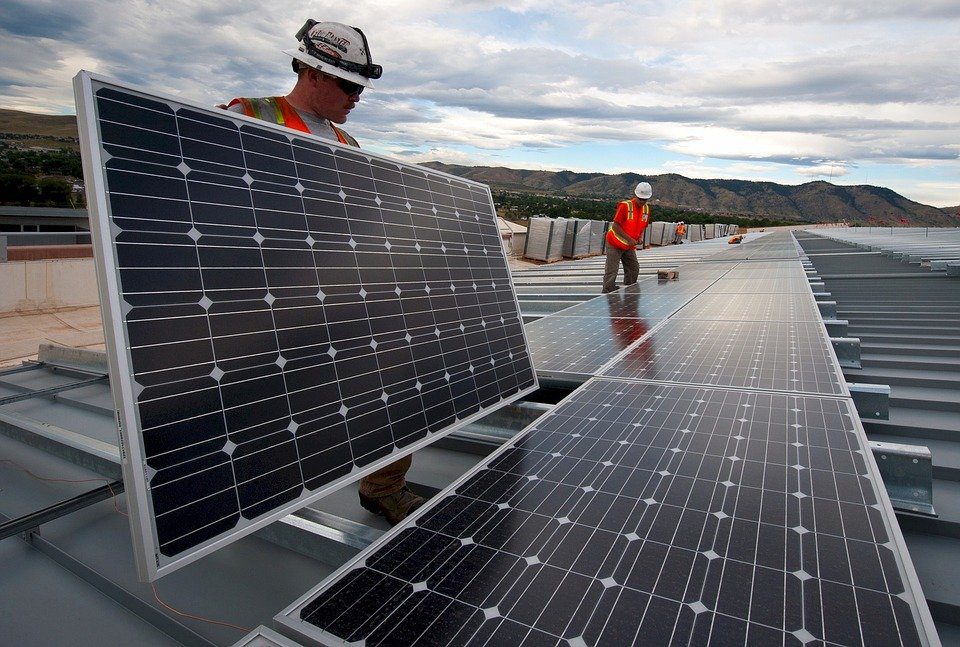
Also, the world of panel placement and design is complicated. There are some interesting reasons to select different alignments. For example, we have come across examples of designers using east-west arrangements instead of an available South facing roof because, although the total generation is lower, the timing of the generation better suited the customers’ consumption profile.
Just like Helioscope takes into consideration the temperature, it also takes into consideration the panels tilt and azimuth. The important thing is to work with a solar system designer that uses high-quality tools to project the generation for your specific photovoltaic system.
What do cloudy days mean for my solar energy production?
This is actually both a simple and complex question. The complexity comes from the fact that every day and every cloud is different. Your idea of very cloudy might be my idea of beautiful, sun-filled wisps. That said, there are some rough guides.
Solar cells mostly work in the same light wavelength range as our eyes.
So, if the sun is behind a thin and wispy cloud where it’s still too bright to look at, the solar production will be only slightly affected. If it’s very overcast but you can still find a somewhat bright spot where the sun is, then you’re probably down to about 50% output. If you’ve got no idea where the sun is, you’re probably down to 20-30% and if you are running for cover before the skies open up, you might be below 10%.
One upside to clouds is the rain that is likely to follow: rain helps wash away dust and dirt increasing your solar panels’ operating efficiency.
Should I wish for cloudy days so my solar panels work better by increasing power generation?
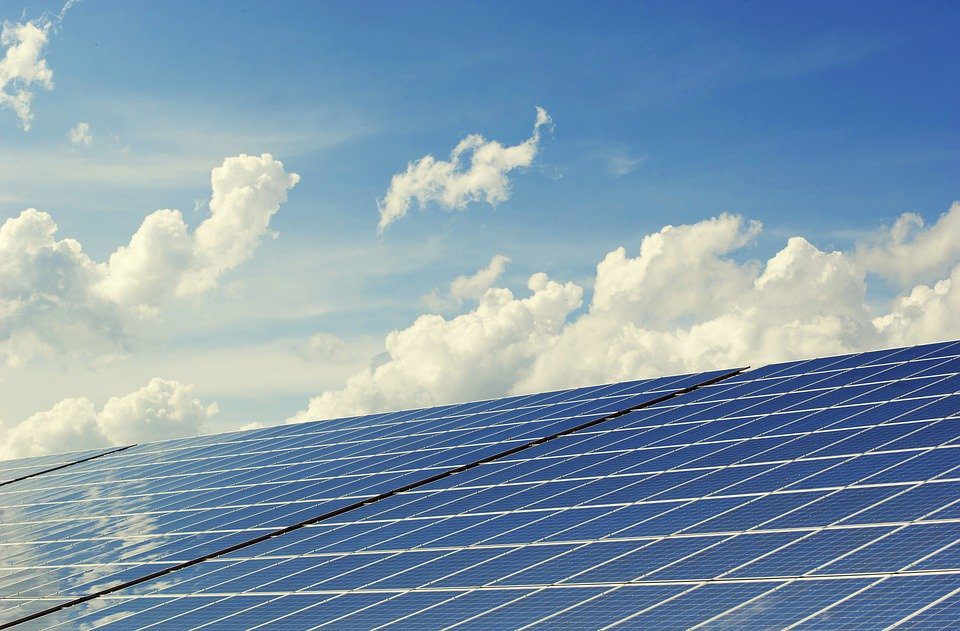
For some time, industry professionals and academic experts have discussed the fact that some clouds may increase peak generation from solar panels. A recent study from Dutch researchers has really bolstered this idea.
According to this study, short term power peaks measured on a number of different solar photovoltaic systems occurred when there were mixed clouds in the sky. Researchers attributed these peaks to several things:
- Some clouds provided short periods of reduced sunlight and allowed the panels to cool. As we discussed, cooler panels trend to be more efficient.
- The right kinds of clouds actually reflect light back to earth. So, solar panels get exposure to light both directly from the sun as well as the light that came from the sun, bounced off the earth, and then bounced back off the white clouds.
The researchers specifically pointed to white, fluffy cumulus clouds as likely the best for creating high peak power moment.
-From a sub-study conducted by Wageningen University & Research and partners
“Partial cloud cover can increase the yield due to the reflection of light on the clouds “
That said, the devil is in the details on this one. One of the researchers also pointed out that although the highest peaks occur on cloudy days, sunny days still account for the days with the most total production.
If you are looking to save money with solar panels, you don’t need the highest peaks, you want the greatest production over the course of the day, week, month, and year.
So, this finding, while important for utility companies who must handle large and sudden shifts in consumption from the grid when there is and isn’t sun, is less relevant to the average home or business owner.
Conclusion
Optimizing solar energy production requires advanced knowledge, tools, and skills.
Designing a custom photovoltaic system that will be the most efficient, will save you the most money, and offset the most carbon emissions means accounting for a lot of variables.
And, there also many important factors that are related to a solar project’s location. It is good to understand the impact of things like heat, seasonal irradiation variation, and clouds. And, it is equally important that you pick a team of engineers who can evaluate your specific requirements and location.
The reality is, we are very fortunate here in Central America. This area has excellent overall conditions for meeting your savings goals and getting the most from your solar panels.
So, don’t fear the cloudy days or the rainy season. Solar panel prices are falling and now is an excellent time to understand how you could save money by going solar.
Learn More:
Kreuwel, Frank PM, et al. “Analysis of high frequency photovoltaic solar energy fluctuations.” Solar Energy 206 (2020): 381-389.
Cloudy Days and Solar Arrays from The National Oceanic and Atmospheric Administration
5 Ways to Get Sunshine on a Cloudy Day
Andrew Galen, Partner Director of Avolta Energy, has spent 12 years in the energy industry. His experience spans the Americas, Europe, and Asia. During his tenure at Citigroup, he has developed deep experience in structured finance and energy trading. Now, he is leading the revolution in financing solar energy in developing markets. Andrew has a BA in economics and international and area studies from Washington University in St. Louis.


